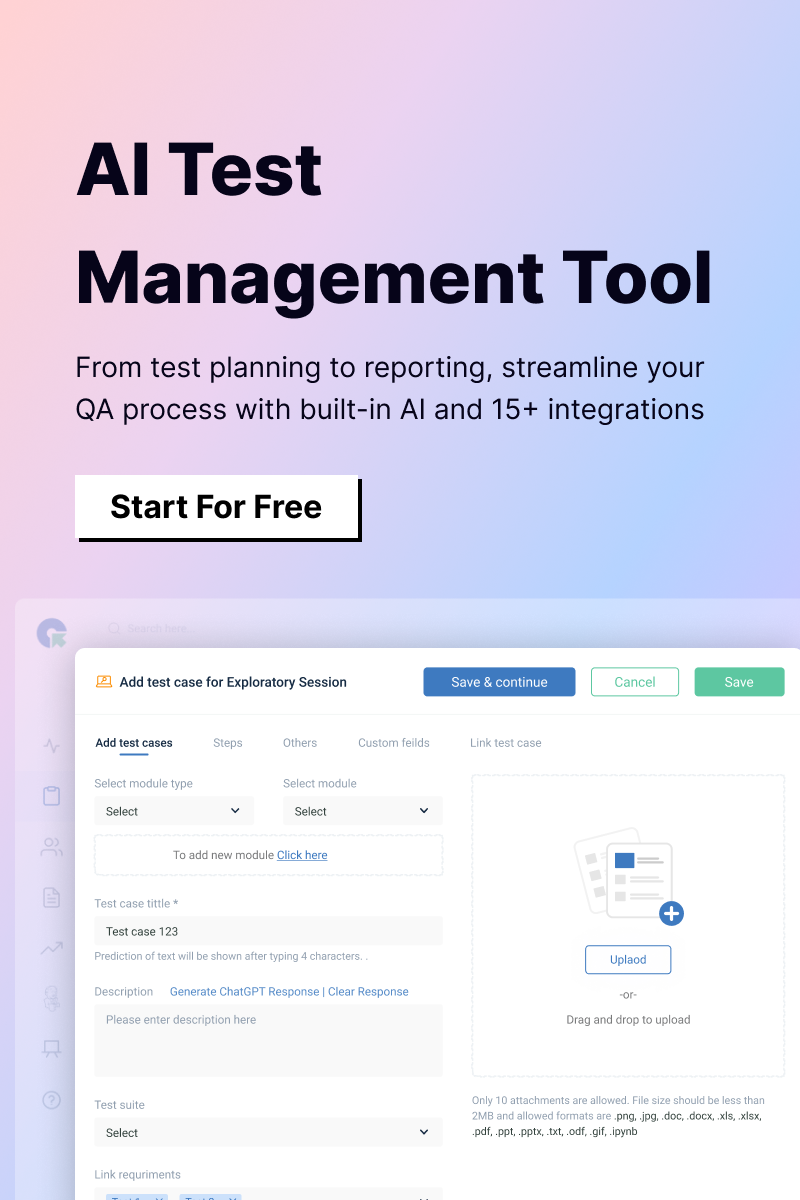A bug triage meeting is a collaborative session where testers, developers, and project stakeholders review, prioritize, and assign reported defects based on their severity, priority, and impact on the project. This helps to address critical issues and allocate resources efficiently.
What tools can be used for defect tracking?
Several tools are available for defect tracking, helping teams efficiently log, manage, and resolve software bugs. Some popular options include:
- QA Touch – A modern test management and defect tracking tool designed for Agile teams.
- Jira – A widely used project management and issue-tracking tool, ideal for Agile workflows.
- Bugzilla – An open-source bug tracking system known for its simplicity and reliability.
- Redmine – A flexible project management tool with built-in issue tracking.
- MantisBT – A lightweight, open-source bug tracking tool suitable for small to medium teams.
- Azure DevOps – Provides integrated defect tracking as part of Microsoft’s development ecosystem.
- Trello – A simple, visual tool that can be adapted for lightweight defect tracking.
How to print it out from your defect tracking tool?
Printing defect reports from a defect tracking tool typically involves exporting the data and then printing it. Here’s a general approach using tools such as QA Touch, Jira, and Bugzilla:
- Access the Defect Tracking Section – Navigate to the defects or bug tracking module in your tool.
- Filter & Sort Data – Apply necessary filters to refine the defect list based on severity, priority, status, or assigned team members.
- Export the Report – Most tools allow exporting data in formats such as PDF, CSV, or Excel.
• QA Touch: Navigate to the defect module, filter defects, and export the report.
• Jira: Use the ‘Export’ option in the Issue Navigator.
• Bugzilla: Use the ‘CSV’ or ‘Printable Report’ feature. - Open the Exported File – Open the downloaded report in a compatible application (Excel, PDF viewer, or a web browser).
- Print the Report – Use the Print option from the application to generate a hard copy.
What is the status of defect tracking?
The status of defect tracking represents the different stages a defect goes through in its lifecycle. Common defect statuses include:
- New – The defect is reported and logged.
- Assigned – The defect is assigned to a developer for resolution.
- In Progress – The developer is working on fixing the defect.
- Fixed – The defect has been resolved by the developer.
- Ready for Retest – The fix is deployed and awaits verification by testers.
- Verified – The tester confirms the defect is resolved.
- Closed – The defect is fixed and no longer an issue.
- Reopened – The defect reoccurs or was not properly fixed.
- Deferred – The defect is postponed for a future release.
- Rejected – The defect is invalid or not considered a bug.
How does QA Touch enhance bug triage?
QA Touch enhances bug triage by providing a structured defect tracking system that helps teams efficiently review, prioritize, and manage bugs. With real-time collaboration, integrations with tools such as Jira and Bugzilla, and customizable defect fields, QA Touch ensures communication between testers, developers, and stakeholders. Its detailed reporting and tracking features support effective decision-making during bug triage meetings, helping teams assign priorities, resolve critical issues first, and maintain overall software quality.



